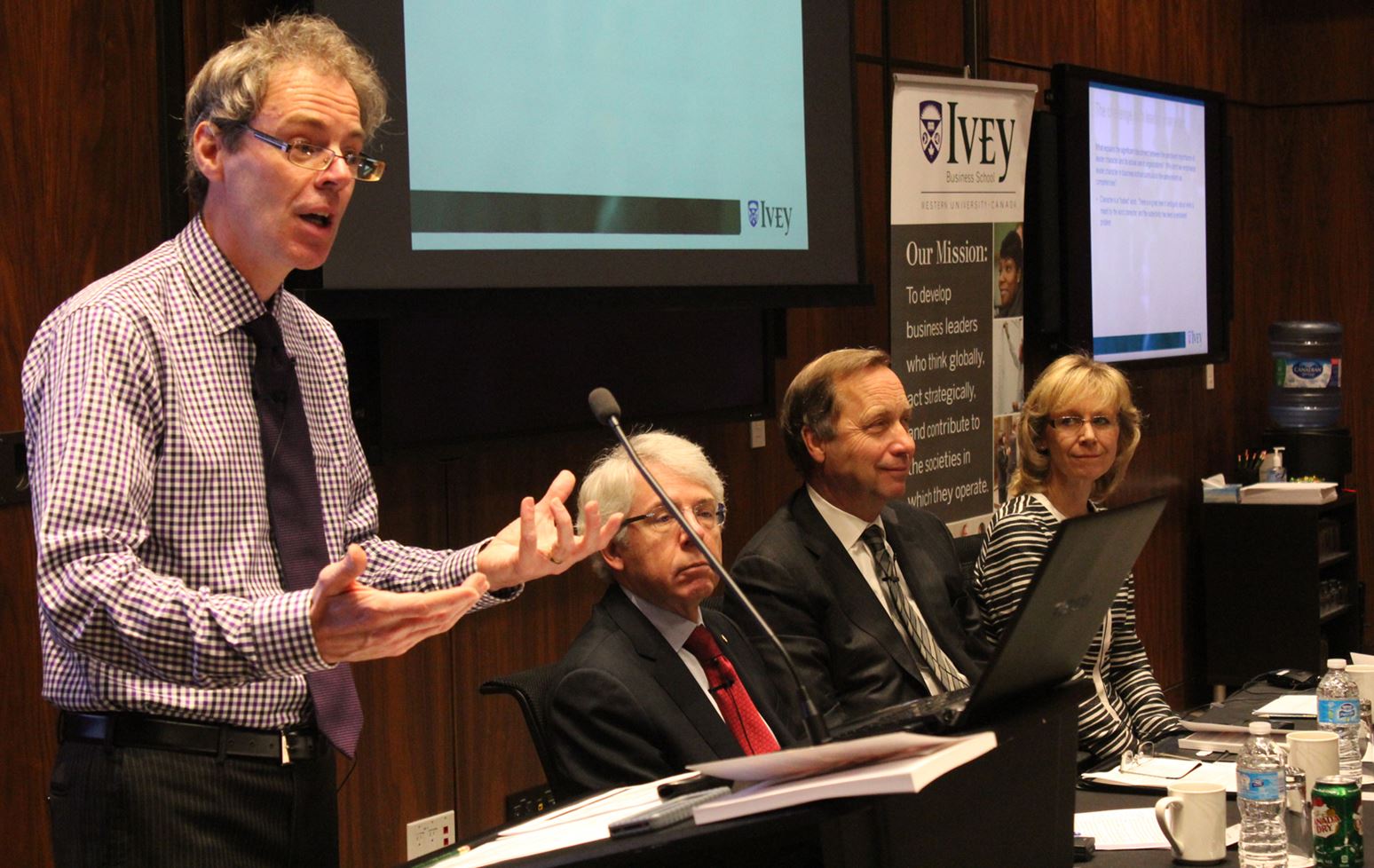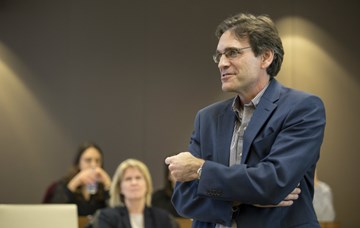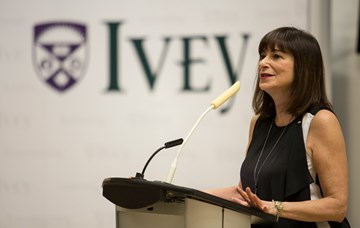Competencies count, character matters, and commitment to the role of leadership is critical to success. These are the three Cs of good leadership. If any one of these components is missing, the others are undermined.
That was the message at an Ivey Idea Forum in Toronto on February 25, where Professor Gerard Seijts, Executive Director of the Ian O. Ihnatowycz Institute for Leadership, presented material from the new book, Developing Leadership Character, which he co-wrote with Professor Mary Crossan and Professor Emeritus Jeffrey Gandz. Research for the book involved conversations with and data collection from senior leaders from different industries, sectors, and countries.
“Character has traditionally received the least attention of the three Cs – both in academia and the world of practice – even though it has long been thought to be a foundational element of leadership effectiveness,” said Seijts. “There is a real disconnect in what we say is important and what we actually see happening in organizations.”
Related to this story
Seijts and his co-authors conceptualized leader character as a mixture of virtues, values, and traits that can be broken down into 11 dimensions:
- Courage;
- Accountability;
- Justice;
- Temperance;
- Integrity;
- Humility;
- Humanity;
- Collaboration;
- Drive;
- Transcendence; and
- Judgment.
Seijts stressed that each of the elements is important because they all work together in decision-making and action.
“As leaders, we really should strive to develop all 11 character dimensions, but for most of us, that might prove to be a very challenging exercise, but not one to shy away from,” he said.
The event also included a panel discussion with high-profile leaders who shared their insights on character in the workplace. Panellists included Rob Brouwer, Canadian Managing Partner, Clients and Markets for KPMG; Dean Connor, HBA ’78, President and Chief Executive Officer of Sun Life Financial; and Cynthia Devine, HBA ’87, Chief Financial Officer of RioCan Real Estate Investment Trust.
Here are some of their key takeaways:
Cynthia Devine
When asked which of the 11 dimensions is most difficult for senior leaders to accept, Devine highlighted humility.
“Generally, to become a leader you’ve had some great successes, you’ve delivered results, and you sometimes get a little full of yourself,” said Devine. “What I tend to see is that humility breaks down. People often mix up themselves personally within their role – they forget the difference between the two. Keep true to who you are, and seek out constant feedback to keep your ego in check and continue to develop as a leader.”
Rob Brouwer
With respect to how senior leaders can help to shape the character of young professionals, Brouwer stressed it’s simply not enough to “walk the talk.”
“We tend to use this term ‘walk the talk,’ but we need to make sure as leaders we are demonstrating the things that we claim hold value,” said Brouwer. “But I think walking the talk isn’t always enough. You need to be talking while walking. We need to talk about the decisions that are made when we celebrate successes and make sure that we articulate what contributed to those successes."
Dean Connor
Connor shared an insightful story to illustrate the risks and rewards of bringing leader character into an organization from a change management point of view.
“We had this leader who was producing unbelievable financial results in a part of the business, but that person was extremely hard on the team,” said Connor. “People told me they were physically ill because of the pressure they were under by this leader.”
Although this leader was provided feedback and coaching, due to his lack of self-awareness, he wouldn’t change and, as a result, was terminated from the position. While this hurt the organization temporarily, Connor said the organization was better in the long run.
“It’s like you have a bush,” said Connor. “Revenue fell and the bush got smaller for a while, but then it grew back three times bigger. It’s an example where you have to find the courage to marry business results with leadership character, but do it the right way.”



